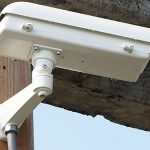NVR, DVR, PVR what is it?
If you are looking for a surveillance system, chances are you have gotten abbreviations thrown at you left, right and center. We have our glossary of most security abbreviations right here, to help you.
When we talk about surveillance solutions the terms DVR, NVR and PVR referencing the recording solution are most often mixed up. We have heard many variations and wanted to shed some light on what they are and what a surveillance video recording solution should be referenced as.
DVR
A Digital Video Recorder (DVR), is a recording solution for analog cameras. These devices function by directly wiring the camera into the DVR. The ports on the DVR are connected to what is called a capture card. These capture cards take the analog signal that an analog camera supplies and converts it to a digital image so it can be stored on the hard drive and viewed on the monitor. A DVR for surveillance purposes is usually an embedded server that is able to interpret the files that the capture card has converted to a digital format. DVRs are a dying breed, as the more popular IP driven surveillance systems are slowly taking over the security industry.
There are two form factors that a DVR can take. One is an embedded system and the other can be a Server with capture cards built in. Servers usually run more sophisticated software and are able to work with more cameras and accomodate future expansions more esaily. Embedded systems use a manufacturer proprietary software and are oftentimes sold by channel size. Each channel corresponds to a camera, so a 4 channel DVR can record 4 cameras at once. Embedded DVRs are usually sold as 4, 8, 16, 32 or 64 channel devices.
NVR
A Network Video Recorder differs by being able to record video from a network. Instead of the camera having to be plugged directly into the video recording device, it can be funneled off a network connection which can make the installation process easier and allows for only a few wires going into the recording device instead of one wire for every camera. Another advantage is the elimination of the capture card. Since an IP camera already sends digital signals via the network, the NVR only has to capture it and save it. This allows for faster processing speeds with the same power and also guarantees data integrity since the files do not have to be converted back and forth. Finally with the cameras utilizing the network, which is an advantage to IP cameras in general, is the faster transfer rate that the cameras can utilize. This allows for the cameras to send a much larger image file and in turn can improve your picture quality.
A NVR can come in two form factors. It can either be a server that is running surveillance software such as Milestone. The other option is an embedded sealed unit that runs software proprietary to the manufacturer. Essentially both devices are a server that allows for video to be recorded and viewed. Servers have the advantage that they are more flexible on future camera add-ons and storage expansions. The software running on Servers is usually also more powerful than on an embedded system. Larger systems or multi site setups usually benefit from a Server, whereas embedded NVRs with lower end specifications are used for smaller projects. Embedded NVRs are usually sold as 4, 8, 16, 32 or 64 channel devices.
PVR
A Programmable Video Recorder is the box you get from Shaw or Telus to watch your TV on. These devices allow you to record TV shows, but have nothing to do with the surveillance world. This term is often used to describe either of the above devices, but is technically incorrect.
We hope this helped you understand the basic differences of video surveillance recording solutions.
Get in Touch
Feel free to contact us with any questions or comments. You can call us at any time at (403) 477-4800 or email us at [email protected].





